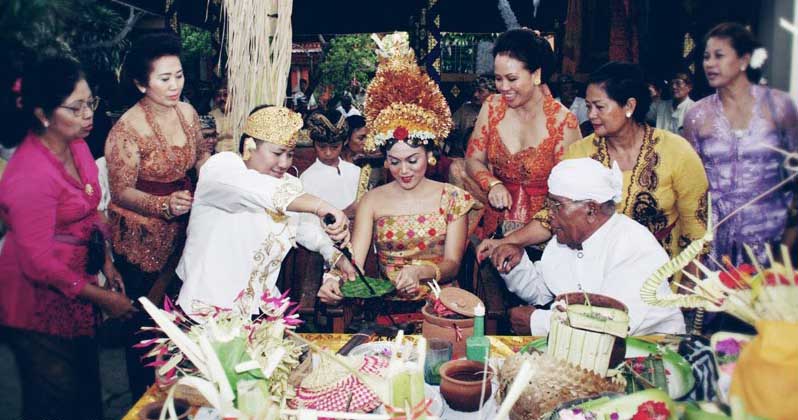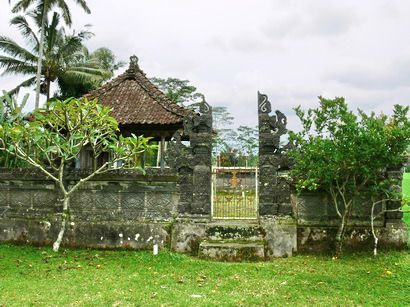A couple’s marriage will not be acknowledged in the society if it is carried out without a traditional sacred ceremony according to the Hindu religious beliefs. In addition, the couple will be excommunicated from their village.
There are three kinds of Balinese Marriage styles in Bali:
“Ngerorod” (elopement), “Memadik” (more respected) and “Nyentana” (where a man moves permanently into his wife’s home).
The most common of these is “Ngerorod” (eloping), whereby the man and woman arrange to meet somewhere out of sight of the girl’s parents and spend the night together at a friend’s house. Sufficient publicity is ensured so that people find out what is going on. Under these circumstances the girl is not allowed to return to her parents and resume life as before, but in most cases the girl’s parents are not in the least surprised. However, they make a great show of pretending to be outraged at the impudence of the boy and his family for plotting the downfall of their daughter.
“Memadik” is a marriage form in Bali in which the boy’s parents and other family members come to the house of the girl’s parents and respectfully ask for their daughter. This is a costly process as large ceremonies and offerings are involved, but needless to say accords significantly more respect from the girls parents as compared to the clandestine night-time elopement. Form the man’s point of view, however, it’s more risky as the parents of his bride-to be must give their approval.
“Nyentana” is the marriage system in Bali in which the boy leaves for the girl’s house and thereafter belongs to the girl’s family. This happens when the girl’s parents have no sons to look after their property – the man is effective assumed into the family to continue the male lineage. In this case, it is the man’s parents who must give their consent.
The morning after the proposal or elopement, a priest performs a simple ceremony called “mekala – kalaan“, which is similar to a small civil wedding in the west. It is a very private affair and the couple wears only the simplest of traditional Balinese clothes. Then they are legally married.
Often the family of the boy will put on a more elaborate, formal wedding ceremony in which everyone dresses up in traditional Balinese clothing and a priest presides. The boy generally has a reception for friends of the couple who were not invited to the traditional ceremony. The reception is strictly western style. Three days after the wedding procession, the family of the boy visit the family of the girl, at whose house the “Ketipat Bantal” ceremony is performed. At this ceremony, the two families become united.
Mantras are chanted and offerings given in order to purify the sperm and the egg in the hopes that the two will be free from the influence of evil and demons will not interfere in the formation of the embryo.
Years ago in the days of Bali’s kingdoms, the marriage system was very strict. Only couples from the same caste were allowed to marry, in order to maintain the purity of the caste system. Anyone braking these marriage rules was banished from their village and often sent out into the jungle for the rest of their days. These days, however, while still very much respected, the caste system no longer holds such an iron-like grip over the Balinese and greater flexibility is permitted.







